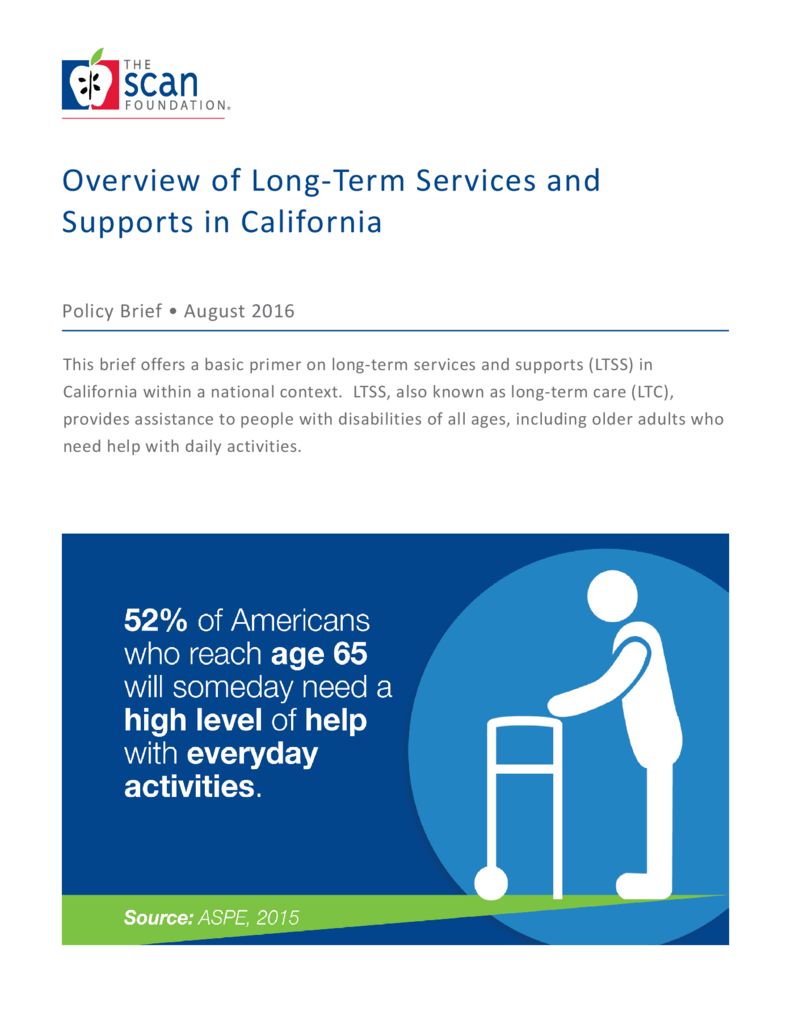Overview of Long-Term Services and Supports in California
summary
The number of individuals age 65 and older across the nation is projected to double in the next 50 years, from over 45 million in 2015 to over 95 million in 2065. California’s age 65 and older population stands at 4 million, which is projected to double to over 8 million by 2030. This brief offers a basic primer on long-term services and supports (LTSS) in California within a national context. LTSS, also known as long-term care (LTC), provides assistance to people with disabilities of all ages, including older adults who need help with daily activities.
Date Updated: 08/02/2016Introduction
The number of individuals age 65 and older across the nation is projected to double in the next 50 years, from over 45 million in 2015 to over 95 million in 2065.1 California’s age 65 and older population stands at 4 million, which is projected to double to over 8 million by 2030.2 Additionally, the projected average life expectancy has increased to over 81 years for women and over 76 years for men.3 Over 20 percent of older adults are living with five or more chronic conditions, and 26 percent of them also live with substantial functional limitations.4 With these changes in the older adult population, the demand for long-term services and supports (LTSS) is expected to increase in California and nationwide.
This brief focuses on LTSS in California within a national context, providing a general overview of who uses these services and supports and how they are provided…
Download the publication for all visuals and complete references.
Continue Reading
This policy brief provides an introduction to The SCAN Foundation’s CLASS Technical Assistance Brief Series, which explores many of the critical issues to be considered for successfully implementing CLASS.
This policy brief describes the broad needs of individuals with disability and the wide range of supportive and environmental solutions that can allow for the most independent living possible. It suggests how findings on social and environmental supports for individuals with disability can inform implementation of CLASS.
This policy brief provides background on the historical development of benefit eligibility triggers in the private long-term care insurance market. Understanding how these triggers came into being can provide important information to those charged with implementing the CLASS Plan.


